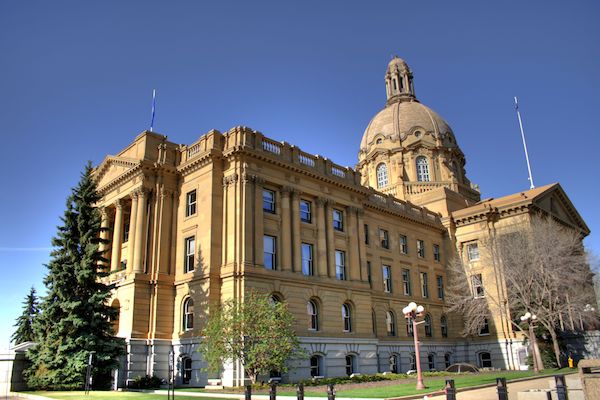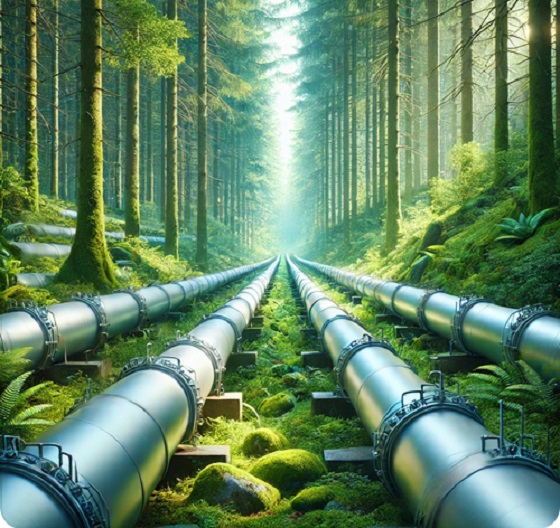Alberta
Albertans vote to keep flipping the clock back and forth by the closest of margins – Referendum Results are in

Elections Alberta has released the official results for the 2021 Alberta Senate Election and Referendum Vote on Equalization and Daylight Saving Time.
The Senate Election and Referendum Vote took place on October 18, 2021, in conjunction with the 2021 Alberta Municipal Elections. Municipalities throughout the province conducted the vote and completed the unofficial count of ballots.
On October 26, 2021, Elections Alberta completed the Official Tabulation of Results.
Senate Election
The Chief Electoral Officer has declared elected, as Senate Nominees, the following three candidates that received the highest number of votes:
- Pam Davidson, Conservative Party of Canada
- Erika Barootes, Conservative Party of Canada
- Mykhailo Martyniouk, Conservative Party of Canada
Referendum Vote: Equalization
The referendum question on Equalization asked electors:
Should section 36(2) of the Constitution Act, 1982 – Parliament and the government of Canada’s commitment to the principle of making equalization payments – be removed from the constitution?
Electors could vote “yes” or “no” on the question.
The Chief Electoral Officer has announced the following results for the referendum:
- “Yes” – 642,501 votes, representing 61.7% of valid ballots cast
- “No” – 399,169 votes, representing 38.3% of valid ballots cast
Referendum Vote: Daylight Saving Time
The referendum question on Daylight Saving Time asked electors:
Do you want Alberta to adopt year-round Daylight Saving Time, which is summer hours, eliminating the need to change our clocks twice a year?
Electors could vote “yes” or “no” on the question.
The Chief Electoral Officer has announced the following results for the referendum:
- “Yes” – 531,782 votes, representing 49.8% of valid ballots cast
- “No” – 536,874 votes, representing 50.2% of valid ballots cast
Results Available
The provincial vote totals, as well as the votes reported from each municipality, are now available at www.elections.ab.ca.
Elections Alberta is an independent non-partisan office of the Legislative Assembly responsible for administering provincial elections, by-elections and referenda.
Alberta
Big win for Alberta and Canada: Statement from Premier Smith

Premier Danielle Smith issued the following statement on the April 2, 2025 U.S. tariff announcement:
“Today was an important win for Canada and Alberta, as it appears the United States has decided to uphold the majority of the free trade agreement (CUSMA) between our two nations. It also appears this will continue to be the case until after the Canadian federal election has concluded and the newly elected Canadian government is able to renegotiate CUSMA with the U.S. administration.
“This is precisely what I have been advocating for from the U.S. administration for months.
“It means that the majority of goods sold into the United States from Canada will have no tariffs applied to them, including zero per cent tariffs on energy, minerals, agricultural products, uranium, seafood, potash and host of other Canadian goods.
“There is still work to be done, of course. Unfortunately, tariffs previously announced by the United States on Canadian automobiles, steel and aluminum have not been removed. The efforts of premiers and the federal government should therefore shift towards removing or significantly reducing these remaining tariffs as we go forward and ensuring affected workers across Canada are generously supported until the situation is resolved.
“I again call on all involved in our national advocacy efforts to focus on diplomacy and persuasion while avoiding unnecessary escalation. Clearly, this strategy has been the most effective to this point.
“As it appears the worst of this tariff dispute is behind us (though there is still work to be done), it is my sincere hope that we, as Canadians, can abandon the disastrous policies that have made Canada vulnerable to and overly dependent on the United States, fast-track national resource corridors, get out of the way of provincial resource development and turn our country into an independent economic juggernaut and energy superpower.”
Alberta
Energy sector will fuel Alberta economy and Canada’s exports for many years to come

From the Fraser Institute
By any measure, Alberta is an energy powerhouse—within Canada, but also on a global scale. In 2023, it produced 85 per cent of Canada’s oil and three-fifths of the country’s natural gas. Most of Canada’s oil reserves are in Alberta, along with a majority of natural gas reserves. Alberta is the beating heart of the Canadian energy economy. And energy, in turn, accounts for one-quarter of Canada’s international exports.
Consider some key facts about the province’s energy landscape, as noted in the Alberta Energy Regulator’s (AER) 2023 annual report. Oil and natural gas production continued to rise (on a volume basis) in 2023, on the heels of steady increases over the preceding half decade. However, the dollar value of Alberta’s oil and gas production fell in 2023, as the surging prices recorded in 2022 following Russia’s invasion of Ukraine retreated. Capital spending in the province’s energy sector reached $30 billion in 2023, making it the leading driver of private-sector investment. And completion of the Trans Mountain pipeline expansion project has opened new offshore export avenues for Canada’s oil industry and should boost Alberta’s energy production and exports going forward.
In a world striving to address climate change, Alberta’s hydrocarbon-heavy energy sector faces challenges. At some point, the world may start to consume less oil and, later, less natural gas (in absolute terms). But such “peak” consumption hasn’t arrived yet, nor does it appear imminent. While the demand for certain refined petroleum products is trending down in some advanced economies, particularly in Europe, we should take a broader global perspective when assessing energy demand and supply trends.
Looking at the worldwide picture, Goldman Sachs’ 2024 global energy forecast predicts that “oil usage will increase through 2034” thanks to strong demand in emerging markets and growing production of petrochemicals that depend on oil as the principal feedstock. Global demand for natural gas (including LNG) will also continue to increase, particularly since natural gas is the least carbon-intensive fossil fuel and more of it is being traded in the form of liquefied natural gas (LNG).
Against this backdrop, there are reasons to be optimistic about the prospects for Alberta’s energy sector, particularly if the federal government dials back some of the economically destructive energy and climate policies adopted by the last government. According to the AER’s “base case” forecast, overall energy output will expand over the next 10 years. Oilsands output is projected to grow modestly; natural gas production will also rise, in part due to greater demand for Alberta’s upstream gas from LNG operators in British Columbia.
The AER’s forecast also points to a positive trajectory for capital spending across the province’s energy sector. The agency sees annual investment rising from almost $30 billion to $40 billion by 2033. Most of this takes place in the oil and gas industry, but “emerging” energy resources and projects aimed at climate mitigation are expected to represent a bigger slice of energy-related capital spending going forward.
Like many other oil and gas producing jurisdictions, Alberta must navigate the bumpy journey to a lower-carbon future. But the world is set to remain dependent on fossil fuels for decades to come. This suggests the energy sector will continue to underpin not only the Alberta economy but also Canada’s export portfolio for the foreseeable future.
-

 Automotive1 day ago
Automotive1 day agoAuto giant shuts down foreign plants as Trump moves to protect U.S. industry
-

 Energy20 hours ago
Energy20 hours agoTrump Takes More Action To Get Government Out Of LNG’s Way
-

 Courageous Discourse2 days ago
Courageous Discourse2 days agoEurope Had 127,350 Cases of Measles in 2024
-

 Health19 hours ago
Health19 hours agoSelective reporting on measles outbreaks is a globalist smear campaign against Trump administration.
-

 2025 Federal Election2 days ago
2025 Federal Election2 days agoHighly touted policies the Liberal government didn’t actually implement
-

 Crime2 days ago
Crime2 days agoEuropol takes out one of the largest pedophile networks in the world with almost 2 million users
-

 2025 Federal Election13 hours ago
2025 Federal Election13 hours agoMainstream Media Election Coverage: If the Election Was a NHL Game, the Ice Would be Constantly Tilted Up and to the Left
-

 COVID-191 day ago
COVID-191 day agoTrump’s new NIH head fires top Fauci allies and COVID shot promoters, including Fauci’s wife








